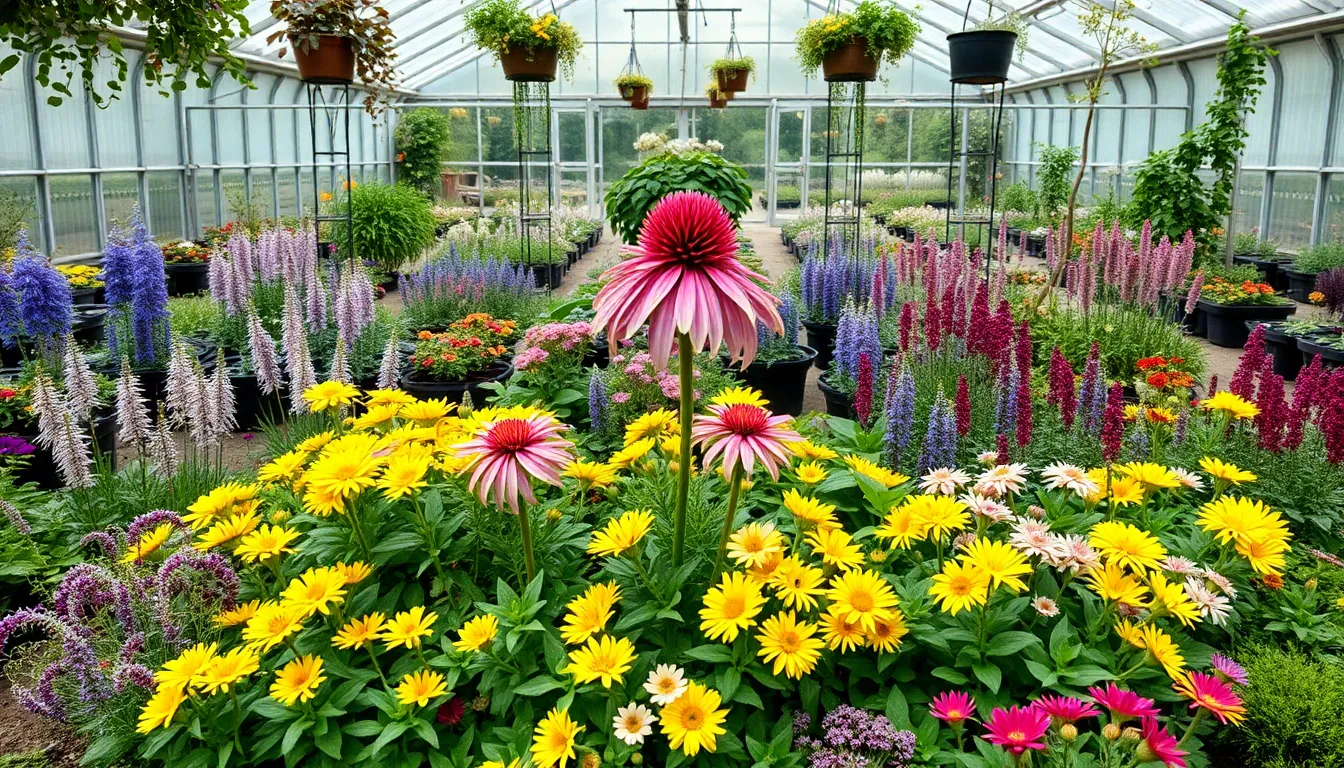Imagine stepping into your garden at any time of year and being greeted by a tapestry of colors, a testament to nature’s ongoing performance. While it may sound too good to be true, with the right selection of perennials, achieving a year-round bloom is entirely possible, even for those new to the world of gardening. In this article, we’ll explore the magical world of perennials that defy the seasons, bringing consistent beauty to your outdoor spaces. Whether you’re a novice with a single pot or a seasoned gardener with sprawling borders, there’s something here for you to discover and cherish.
For beginners, the idea of maintaining a vibrant garden all year might seem daunting, but fear not—perennials are your steadfast allies. These plants, once established, will not only return year after year but can also bloom across multiple seasons with minimal fuss. Experienced gardeners will appreciate the chance to diversify their planting schemes with varieties that offer both longevity and splendor. We’ll delve into specific species that thrive in various climates, ensuring you find the perfect fit for your garden’s unique conditions.
Throughout this guide, we’ll provide practical tips and insights to help you choose the right perennials for your garden, ensuring blooms that endure from the frosty embrace of winter to the sun-drenched days of summer. You’ll learn how to care for these plants, maximizing their potential with simple, effective strategies. By the end of this journey, you’ll be equipped with the knowledge to transform any patch of earth into a perennial paradise. So, grab your gardening gloves and join us in uncovering the secrets to creating a garden that bursts with life all year round!
Understanding Year-Round Blooming Perennials
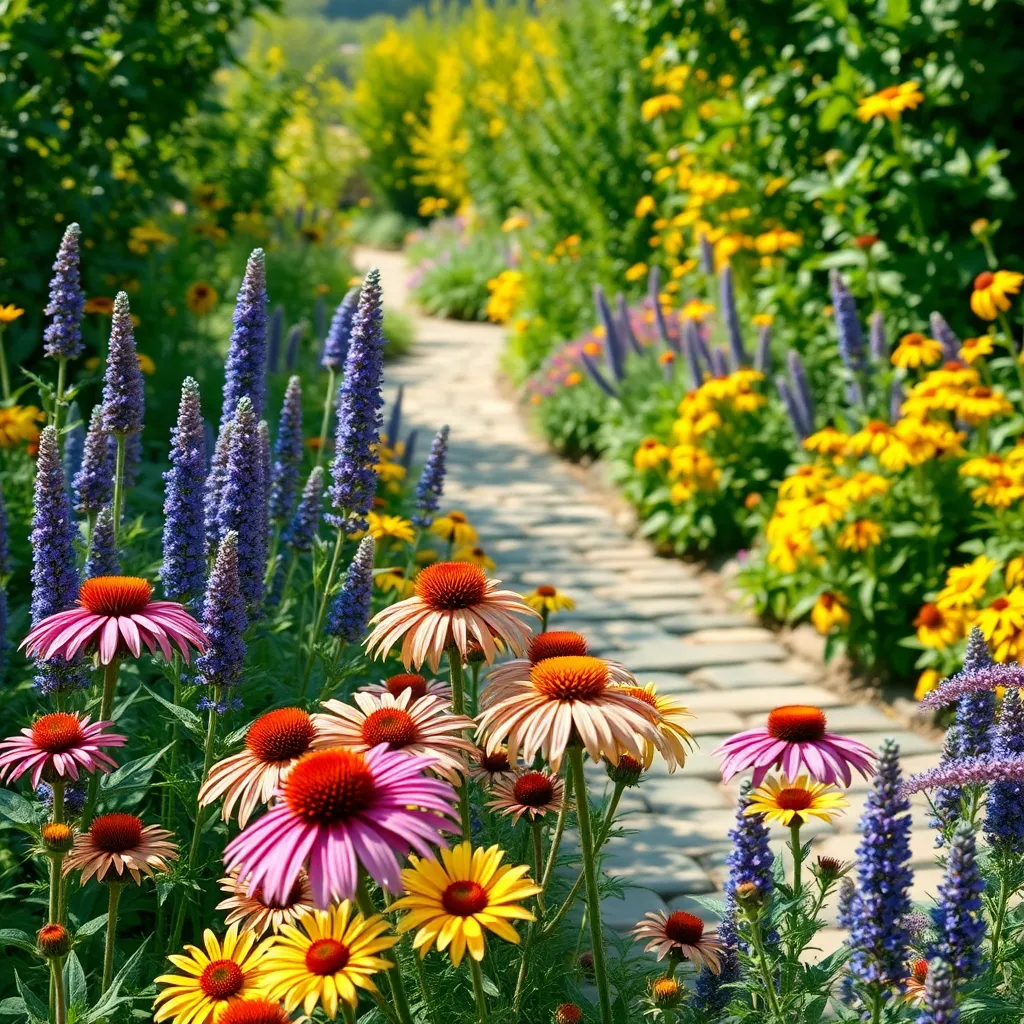
Year-round blooming perennials are a gardener’s delight, offering continuous color and interest in your garden. To achieve this, it’s crucial to select the right varieties and provide them with the optimal growing conditions.
Consider plants like the Chrysanthemum, which can bloom almost year-round in milder climates. By planting them in well-draining soil and ensuring they receive at least six hours of sunlight daily, you can maximize their blooming potential.
Incorporate perennials that have staggered blooming periods to maintain color diversity throughout the year. For instance, pairing Hellebores with Daylilies can ensure you have blooms in both winter and summer months.
Regular maintenance is key to keeping these plants healthy and vibrant. This includes deadheading spent blooms, which encourages further flowering, and applying a balanced fertilizer in early spring to support growth.
Advanced gardeners can experiment with microclimates in their garden to extend the blooming season. By creating sheltered spots or using mulch to regulate soil temperature, you can help plants bloom even in cooler months.
Watering practices should be adjusted according to the seasons. While most perennials require consistent moisture during their growing period, reducing water in dormant months can prevent root rot issues.
Top Varieties for Continuous Color
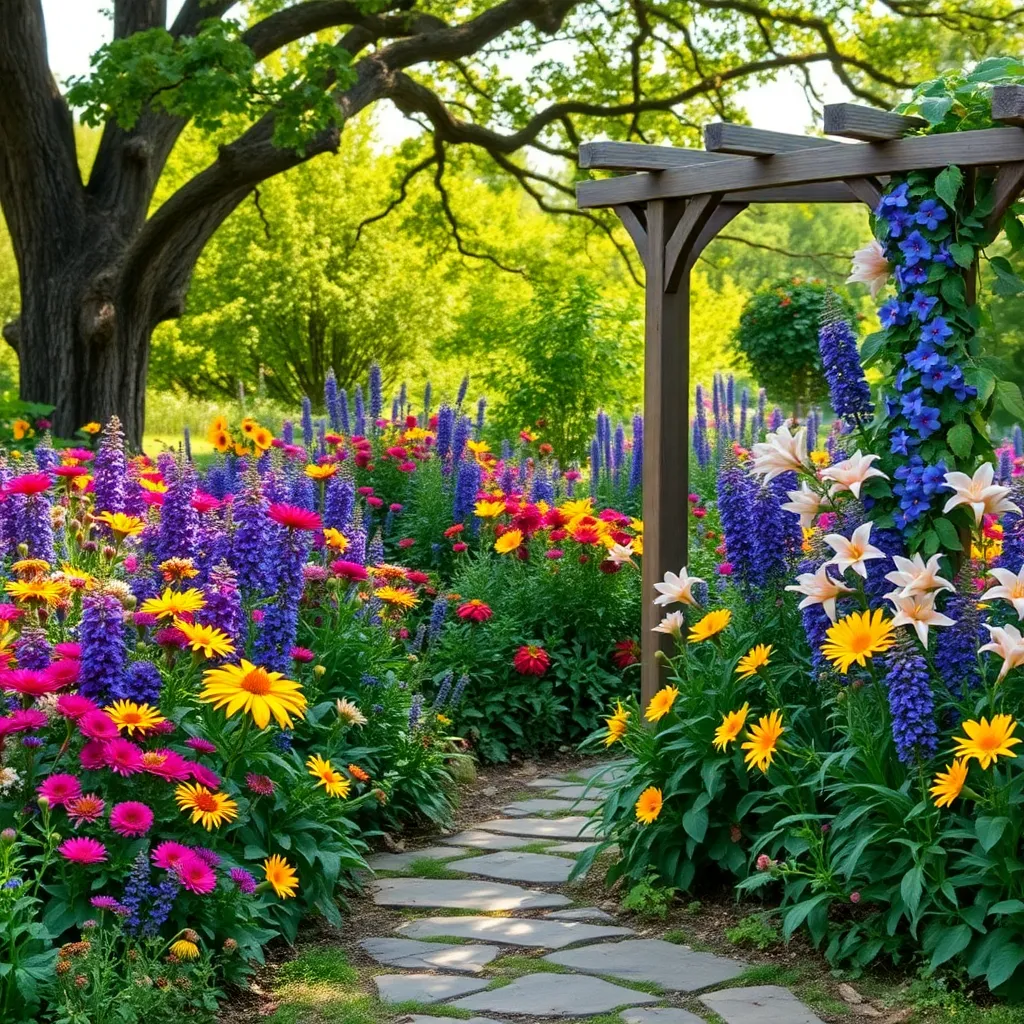
For gardeners seeking to achieve continuous color, selecting the right perennial varieties is crucial. Opt for plants like Coreopsis ‘Moonbeam’ and Geranium ‘Rozanne’, which are known for their extended blooming periods and vibrant hues.
Coreopsis ‘Moonbeam’ thrives in well-drained soil and full sun, making it ideal for sunny borders. It benefits from regular deadheading, which encourages more blooms and extends its flowering season.
Meanwhile, Geranium ‘Rozanne’ flourishes in a range of soil types, from sandy to clay, as long as it is well-drained. This variety is remarkably low-maintenance, requiring only occasional watering and some light pruning to maintain its shape.
For an advanced gardening approach, consider interplanting these perennials with others that have different blooming cycles. This strategy not only ensures a vibrant garden throughout the year but also attracts a diverse range of pollinators, enhancing the ecological balance of your garden space.
Optimal Planting Strategies for Perennials
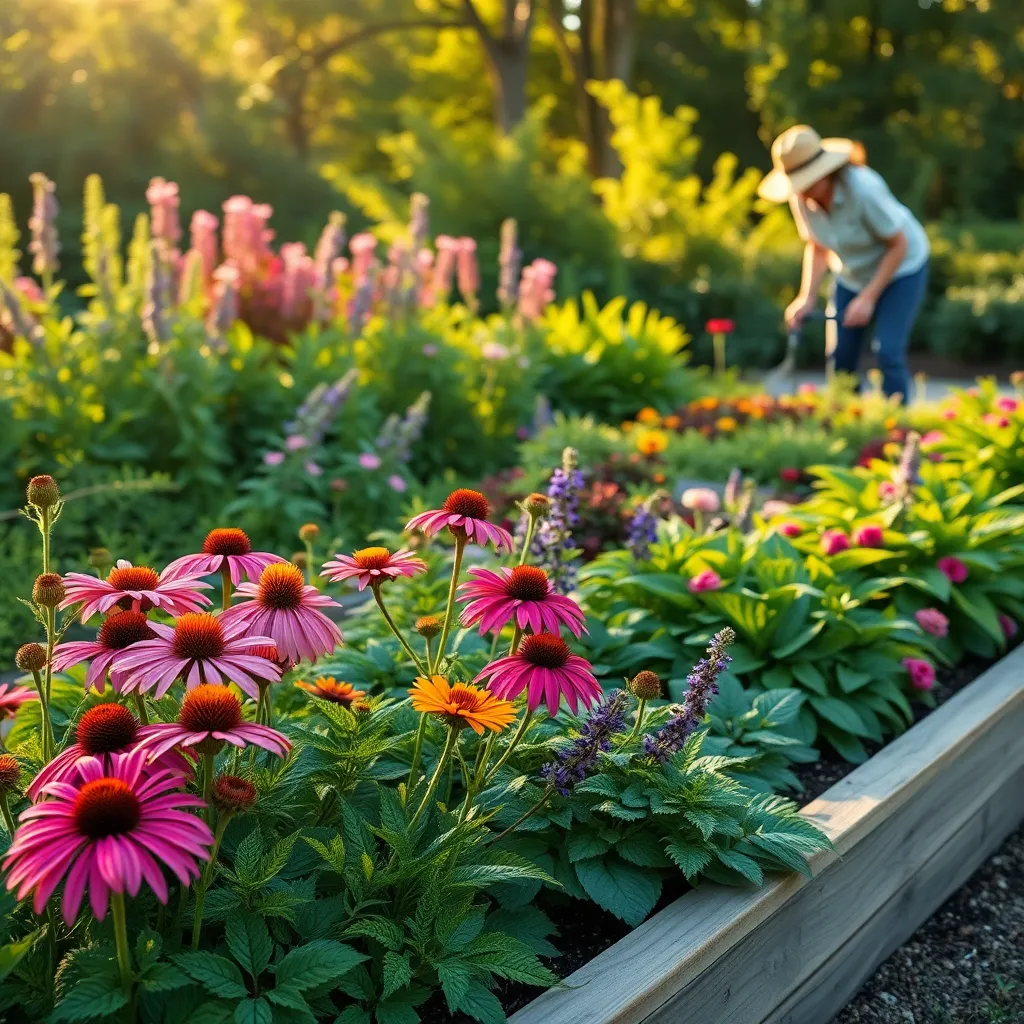
When planting perennials that bloom all year long, consider starting with a well-prepared soil bed. A mix of loamy soil enriched with organic compost provides the best foundation, ensuring proper drainage and nutrient availability.
Carefully select the location based on your perennial’s light requirements, as most thrive in a spot receiving at least six hours of sunlight daily. If your garden lacks sunlight, opt for shade-tolerant varieties to maintain continuous blooms throughout the year.
Watering techniques are crucial for perennial success; aim for a consistent moisture level without sogginess. It’s beneficial to use drip irrigation systems or soaker hoses to deliver water directly to the roots, minimizing evaporation and fungal issues.
For advanced gardeners, consider implementing a mulching strategy to regulate soil temperature and retain moisture. Organic mulches like shredded bark or leaf mold not only support plant health but also gradually enrich the soil as they decompose.
Caring for Long-Blooming Perennials
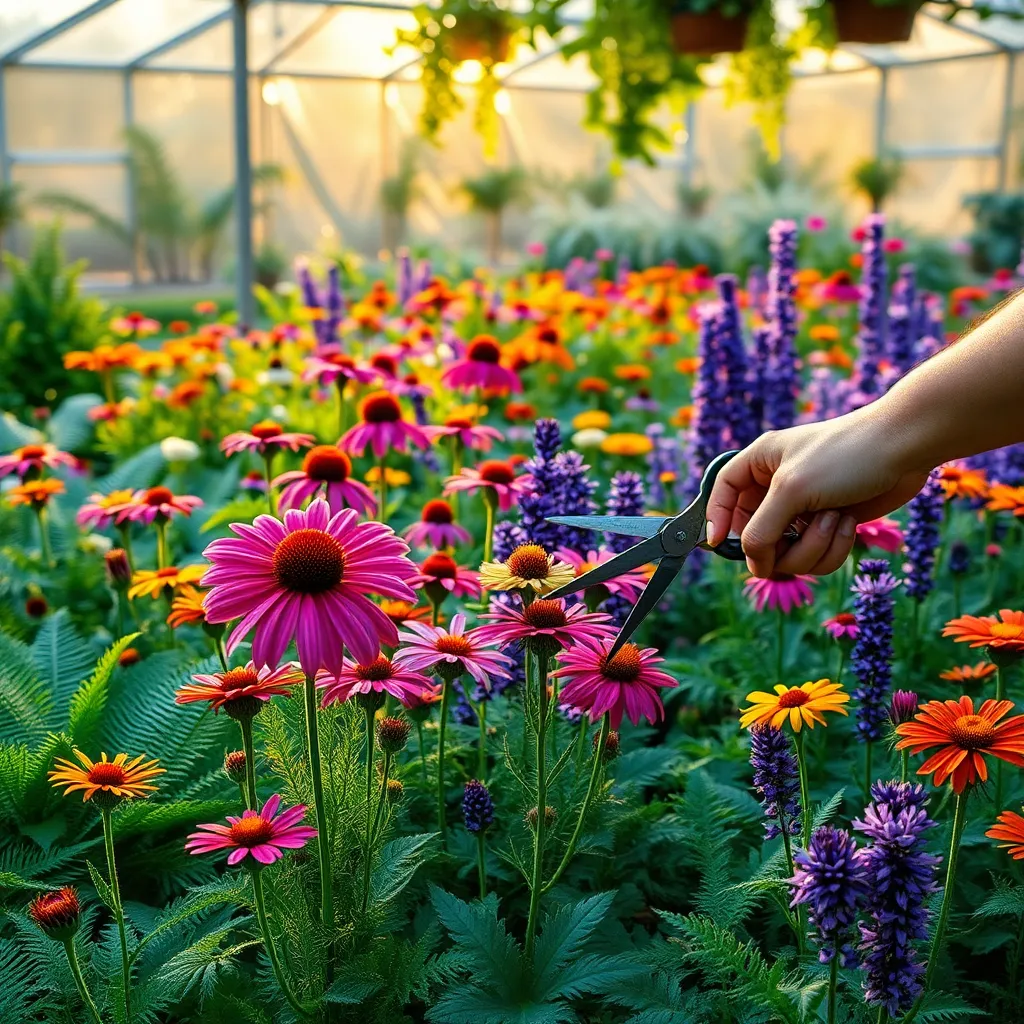
Caring for long-blooming perennials requires attention to their specific needs throughout the year. Consistent care ensures these plants thrive and deliver vibrant blooms season after season.
Start by ensuring that your perennials are planted in well-draining soil, as this prevents root rot. Amend the soil with organic matter like compost to enhance its fertility and drainage capabilities.
Watering is crucial, especially during dry spells, to maintain the plant’s health and bloom production. Water deeply once a week, allowing the soil to dry slightly between watering to prevent over-saturation.
Regular deadheading encourages continued blooming and prevents the plant from expending energy on seed production. Simply snip off spent blooms with clean scissors, cutting back to the nearest healthy leaf or bud.
Fertilizing long-blooming perennials is essential for sustained growth and flowering. Use a balanced, slow-release fertilizer in early spring, and consider a light mid-season top-up to support ongoing blooms.
For those with more experience, dividing your perennials every few years can rejuvenate the plants and increase their bloom potential. Do this in early spring or fall, ensuring each division has several healthy shoots and roots.
Common Challenges and Solutions
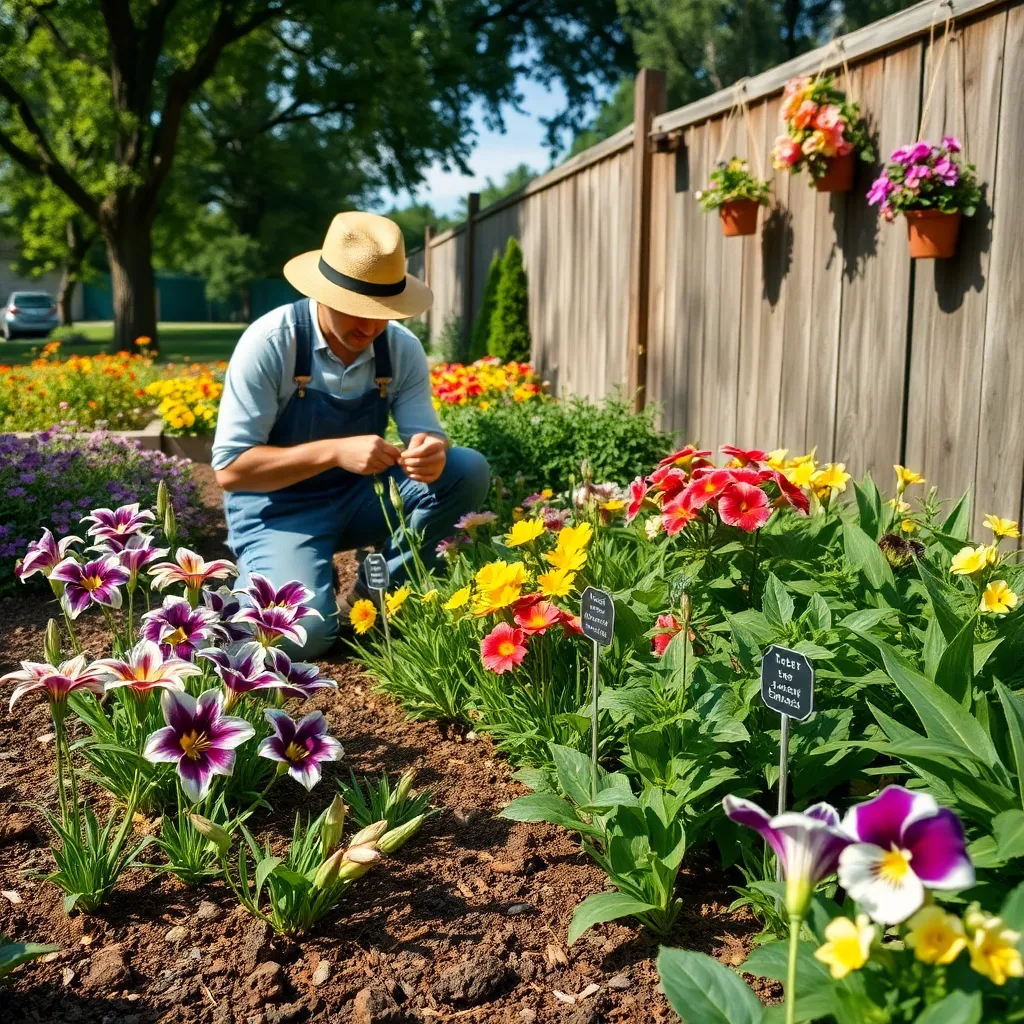
One common challenge with perennials that bloom all year is managing soil conditions. To ensure optimal growth, use a well-draining soil mix rich in organic matter, such as a combination of compost and peat moss.
Another issue gardeners face is overwatering, which can lead to root rot. Water your perennials deeply but infrequently, allowing the top inch of soil to dry out between waterings to maintain proper moisture levels.
Pests can also be a persistent problem for perennial plants. Implementing natural pest control methods, like introducing beneficial insects or using neem oil, can effectively keep harmful pests at bay without damaging the plants.
For beginners, it’s crucial to understand the importance of sunlight exposure. Most long-blooming perennials thrive in full sun, requiring at least six hours of direct sunlight daily to produce continuous blooms.
Experienced gardeners might consider deadheading to encourage more flowering. Regularly removing spent blooms redirects the plant’s energy from seed production to new growth, resulting in more vibrant blossoms over time.
Incorporating mulch around your perennials offers dual benefits. Not only does mulch help retain soil moisture, but it also suppresses weed growth, making plant maintenance easier and more effective.
Conclusion: Growing Success with These Plants
In cultivating a thriving, year-round relationship, the article ‘Perennials That Bloom All Year Long’ explored five essential concepts: nurturing consistent emotional connections, fostering open and honest communication, maintaining shared goals and dreams, embracing adaptability and growth, and regularly expressing appreciation and love. Each of these elements serves as a foundation for a resilient and flourishing partnership, much like perennials that endure and bloom regardless of the season.
As an actionable next step, consider setting aside time this week to have an open dialogue with your partner about one of these key concepts that you feel might need more attention. Whether it’s reigniting emotional intimacy or aligning future aspirations, this conversation could be the spark that revitalizes your relationship.
To ensure these insights remain at your fingertips, bookmark this article for future reference. It will serve as a handy guide whenever you need a refresher or inspiration in your relationship journey.
Remember, relationship success is a continuous journey, not a destination. By integrating these principles into your daily interactions, you’re investing in a partnership that not only endures but blossoms beautifully over time. Your relationship has the potential to be as enduring and vibrant as the most resilient perennials.

